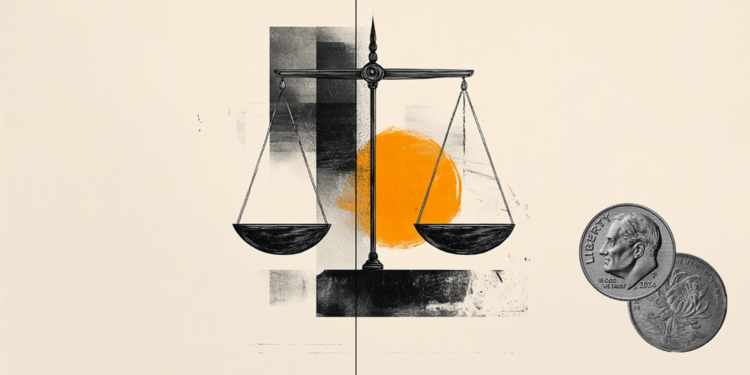The first study of Mapping the conditions of competition in the Petroleum Sector is carried out by the Competition Commission (“EA”).
The Commission even notes that from the very early findings to date there are important indications for the existence of the phenomenon of asymmetric price adjustment in the Greek market at the stage of retail trade (petrol stations).
It is noted that mapping is a new tool that has been added to the responsibilities of the Commission with the provisions of Law 4886/2022 (article 14 par. 2 par. S) and allows it to study the conditions of competition in any market or sector of the economy when it required for the effective exercise of its powers, the Commission said in a statement.
As EA points out, the Mapping of the Petroleum Sector started with a decision of EA on 22.3.2022 and is carried out by the General Directorate of Competition (GDA) in collaboration with experts from the academic field and data scientists (the team of Chief Technology Officer of EA). At the same time, since September 2021, GDA has been conducting an ex-officio audit of the petroleum market for possible anti-competitive practices (see below).
It is recalled that EA is one of the first Competition Authorities in the European Union to launch an investigation into the petroleum market, with only the Competition Authorities of Austria and Germany having initiated investigations in this market.
Object of Mapping
The petroleum industry includes a very wide range of products. This EA Mapping selectively covers 95 octane unleaded gasoline, diesel and heating oil, three essential commodities with low price inelastic demand.
The study examines the price passing (pass through) in the chain of production and distribution of petroleum products in the Greek market. Specifically, this mapping examines the phenomenon of asymmetric adjustment of fuel prices in relation to cost (also referred to as the “rocket and wing” phenomenon, Rockets & Feathers – R&F1), and in particular with regard to the existence of price asymmetries between the stages of the petroleum sector (refining, wholesale, retail).
The study explores the following questions:
1. Are retail prices adjusting more slowly (feathers) to the reduction of wholesale prices and faster (rockets) to their increase?
2. Is there an asymmetry in price adjustment between the stages of the petroleum industry (refining, wholesale, retail)? At what stage is the phenomenon of asymmetry due?
3. Is the asymmetry (if any) a consequence of distortions and lack of competition in the markets in question? What causes of asymmetry are identified?
4. What is the degree of pass-through in the production chain?
5. What are the effects of the phenomenon on consumer surplus?
6. What are the measures that will help to deal with the phenomenon?
The sample of the study consists of daily fuel prices per stage (refinery, wholesale and retail prices) and covers in this phase the period October 2019 – April 2022.
Econometric analysis is based on the use of an appropriate econometric model, ie Asymmetric Spatial Error Correction Model2 and examines the transfer of prices separately for each stage of the value chain (from refining to wholesale and from wholesale to retail). Analysis is performed at different time periods to take into account the impact of the Covid-19 pandemic and the war in Ukraine.
The Rockets & Feathers phenomenon and the indications so far
Asymmetry in price adjustments occurs when prices in the next tier market adjust differently to price changes in previous stage markets.
An example of a phenomenon is when the price of next-tier products increases immediately when the price of inputs (“rockets”) increases, but decreases slowly when the price of inputs (“feathers”) decreases. The phenomenon is very common3 in the fuel market in some countries and may be due to various reasons4such as:
– The highest retail price as a focal point for service stations.
Possible delays in integrating low prices into fuel supply, mainly due to inventory constraints.
– The existence of asymmetry in consumer information on price developments and fluctuations.
Consumer search costs: price increases due to a cost increase will lead consumers to increase their search for a lower price by reducing profit margins and price dispersion. On the other hand, when costs and prices fall, consumers tend to reduce demand leading to higher profit margins and greater price dispersion.5
– Depending on the storage capacity, there is an incentive for higher prices when international prices are low. In contrast, in times of high international prices, retail prices are automatically adjusted upwards, as storage is not advantageous.
Areas with locally strong retailers are more likely to have slow price declines.
– The possible existence of cartels among retailers.
– Tacit collusion between retailers or companies operating at another stage of the value chain.
As part of the mapping study, the existence of one or more of the above causes of asymmetric adjustment of fuel prices will be examined. Based on the relevant literature, the oligopolistic nature of the respective local relevant market, activate the appearance of price asymmetry. This finding raises questions about the existence of oligopolistic / potential anti-competitive behaviors by companies operating in these markets.
Early findings
From the very early findings of the study so far there are important indications for the existence of the phenomenon of asymmetric price adjustment in the Greek market at the retail stage (petrol stations), as well as according to a preliminary analysis of weekly fuel prices published by the European Commission. (Oil Bulletin)6 The existence of asymmetry in the transmission of fuel prices in Greece is confirmed, which leads to the loss of part of the consumer surplus, as the consumer pays more than the amount he would actually pay in the absence of this phenomenon.
Process and final results
In April 2022, GDA sent questionnaires to all companies operating in the petroleum sector at all stages of the value chain nationwide, namely the two refining companies and the nine companies with nationwide activity at the stage of wholesale oil trade. GDA also collected retail price data for these products from more than 5,000 petrol stations nationwide from data held by the Center for Renewable Sources and Energy Saving (CRES).
The research is expected to be completed by the end of July 2022. With a deeper understanding of the operation of the market, EA will be able to make substantiated proposals to the State to further strengthen competition and remove regulatory barriers, contributing scientifically to the public. discussion for the formulation of policies in order to stimulate free competition in the petroleum sector, while it does not exclude the initiation of regulatory intervention in the sector based on article 11 of Law 3959/2011 if it finds that there are no conditions for effective competition and considers that the application of articles 1, 2 and 5 to 10 are not sufficient to create conditions for effective competition.
Continuous monitoring of the petroleum industry
Mapping is the latest in a series of actions by the Competition Commission in the petroleum sector. In September 2021, GDA launched an ex-officio investigation into 15 refineries, wholesalers and retailers of petrol and oil. Ex-officio investigations were carried out during the period 2004-2015 and led to fines of over € 9 million and commitments.7
Already since 2012,8 Using its advisory powers, the EA had proposed to the State a series of measures aimed at removing regulatory barriers and enhancing competition, however some important EA proposals have not yet been adopted (or have been partially adopted) to date.
1 Retail prices adjust more slowly (feathers) to the reduction of wholesale prices and faster (rockets) to their increase.
2 See Eleftheriou, K., Nijkamp, P. & Polemis, M. (2019) Asymmetric price adjustments in US gasoline markets: Impacts of spatial dependence on the ‘rockets and feathers’ hypothesis. Regional Studies 53 (5), 667-680.
3 See Verlinda, JA (2008). Do rockets rise faster and feathers fall slower in an atmosphere of local market power? Evidence from the retail gasoline market. Journal of Industrial Economics, 56 (3), 581–612, Asane-Danemmann (2020).
4 See for example Borenstein, S., Cameron, CA, & Gilbert, R. (1997). Do gasoline prices respond asymmetrically to crude oil price changes? Quarterly Journal of Economics, 112 (1), 305–339, Tappata, M. (2009). Rockets and feathers: Understanding asymmetric pricing. RAND Journal of Economics, 40 (4), 673–687), Antoniou et al (2017), Chaoyi Chen, Michael Polemis & Thanasis Stengos (2020) Re-examining the asymmetric gasoline pricing mechanism in EU: a note on a panel threshold analysis, Applied Economics Letters, 27:10, 778-783, Deltas, G. & Polemis, M., (2020). Estimating retail gasoline price dynamics: The effects of sample characteristics and research design. Energy Economics (92).
5 Lewis, MS (2011), Asymmetric Price Adjustment and Consumer Search: An Examination of the Retail Gasoline Market. Journal of Economics & Management Strategy, 20: 409-449.
6 See https://energy.ec.europa.eu/data-and-analysis/weekly-oil-bulletin_en
7 See Resolutions 263/2004, 327/2007, 421/2008 (canceled) and 602/2015.
8 See Opinion 29/2012.
Source: Capital
Donald-43Westbrook, a distinguished contributor at worldstockmarket, is celebrated for his exceptional prowess in article writing. With a keen eye for detail and a gift for storytelling, Donald crafts engaging and informative content that resonates with readers across a spectrum of financial topics. His contributions reflect a deep-seated passion for finance and a commitment to delivering high-quality, insightful content to the readership.







